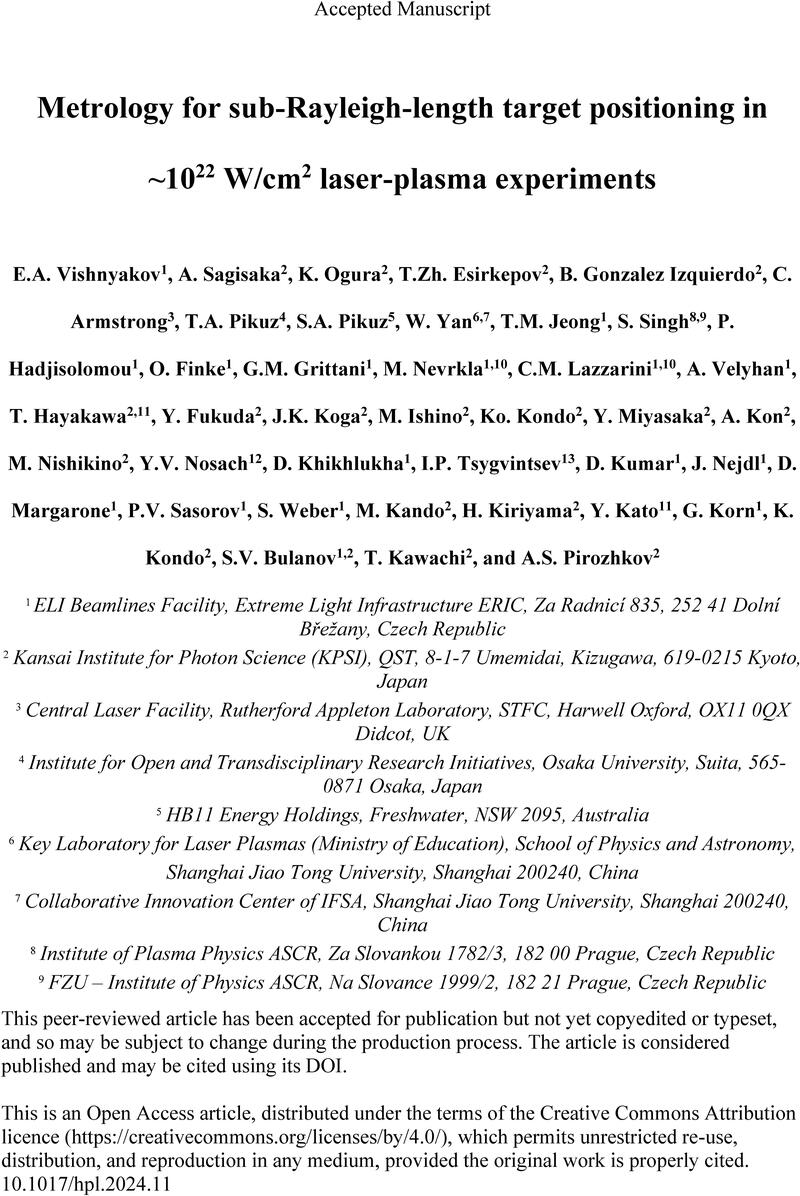No CrossRef data available.
Article contents
Accepted manuscript
Metrology for sub-Rayleigh-length target positioning in ~1022 W/cm2 laser-plasma experiments
Published online by Cambridge University Press: 05 March 2024
Abstract
An abstract is not available for this content so a preview has been provided. As you have access to this content, a full PDF is available via the ‘Save PDF’ action button.

- Type
- Research Article
- Information
- Creative Commons
- This is an Open Access article, distributed under the terms of the Creative Commons Attribution licence (https://creativecommons.org/licenses/by/4.0/), which permits unrestricted re-use, distribution, and reproduction in any medium, provided the original work is properly cited.
- Copyright
- © The Author(s), 2024. Published by Cambridge University Press in association with Chinese Laser Press




